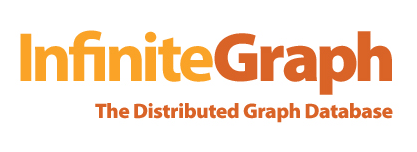 NEWS
NEWS
 NEWS
NEWS
 NEWS
NEWS
![]() Today Objectivity announced a new version of its proprietary graph database InfiniteGraph, which now includes a plugin framework and support for the common graph database standard Gremlin.
Today Objectivity announced a new version of its proprietary graph database InfiniteGraph, which now includes a plugin framework and support for the common graph database standard Gremlin.
Graph databases are a type of NoSQL/non-relational database that focus on the relationships between objects in a database (yes, it is odd that relational databases aren’t good at dealing with relationship data). Social networks are one of the primary examples of a graph database use case: you can store all the information about the relationships between different people in a way that’s easy to traverse.
Tinkerpop Blueprints is a collection of standards for graph databases, including a graph traversal language called Gremlin. Gremlin is supported by graph databases like TinkerGraph, Neo4j, OrientDB and DEX. There’s been a call for a common languages for different types of NoSQL databases. UnQL from Couchbase and SQLite is an attempt to provide that for key-value stores, and Gremlin could provide that for graph databases. This is a topic to watch – watch a post as part of my Trends 2012 series.
Meanwhile, the plugin framework will allow developers to extend the functionality of InfiniteGraph and export data in GraphML and JSON formats.
Objectivity was founded in 1988 and launched Objectivity/DB, an object database (a precursor to graph databases). It found early success as a non-relational database solving what we’d now call “big data” problems for a number of clients, particularly in science and government. It launched InfiniteGraph in 2010. You can find out more about its architecture in Curt Monash’s write-up here.
Support our mission to keep content open and free by engaging with theCUBE community. Join theCUBE’s Alumni Trust Network, where technology leaders connect, share intelligence and create opportunities.
Founded by tech visionaries John Furrier and Dave Vellante, SiliconANGLE Media has built a dynamic ecosystem of industry-leading digital media brands that reach 15+ million elite tech professionals. Our new proprietary theCUBE AI Video Cloud is breaking ground in audience interaction, leveraging theCUBEai.com neural network to help technology companies make data-driven decisions and stay at the forefront of industry conversations.